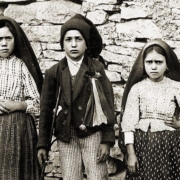George Weigel, writing in Catholic World Report on what amounts to a total demolition of the John Paul II Institute for Marriage and the Family in Rome:
There is a history here, and it’s worth revisiting in order to get the destruction underway into clearer focus.
Despite the global media addiction to the “liberal/conservative” trope for analyzing the Second Vatican Council and the debates following it, the really consequential division after the Council (which, as several conciliar theologians’ diaries attest, began to open up during the Council’s third and fourth periods) was between two groups of previously-allied reformist theologians, one group of which seemed determined to embrace intellectual modernity and its sundry skepticisms in full, while the other was committed to ballasting authentic Catholic reform by grounding theological development in the Church’s living tradition. This “War of the Conciliar Succession” (as I call it in my forthcoming book, The Irony of Modern Catholic History) was no mere donnybrook among intellectuals; it had real consequences in the life of the Catholic Church.
And:
Resistance to the magisterium of John Paul II (a magisterium that was influenced, of course, by then-Cardinal Ratzinger) was deep-seated and bitter among those self-styled progressives who imagined that they had won the War of the Conciliar Succession and yet suddenly found themselves, after the second conclave of 1978, on the outs in the great game of ecclesiastical politics – even though they continued to maintain an iron grip on most theological faculty appointments and on a lot of theological publishing. John Paul II’s response to this recalcitrance and intellectual pride was not to attack it head-on, purging progressivist faculty from the Roman universities. Rather, his strategy was to encourage newer and dynamically orthodox foundations like the Pontifical University of the Holy Cross (now, arguably, the most intellectually interesting of the Roman schools), and to create new institutes of higher learning in existing universities.
In both cases, the goal was to foster the genuine renewal of Catholic theology according to the mind of Vatican II – and not according to the minds of Immanuel Kant, G.W.F. Hegel, Ludwig Feuerbach, and Karl Marx. Reversing Gresham, John Paul II was quietly confident that good coinage – good theology – would eventually drive out bad ethical coinage, for the latter was bankrupting human lives and leading people into confusion and misery.
The John Paul II Institute for Marriage and the Family was the linchpin in this effort to create vibrant alternatives to Catholic Lite scholarship, which had become increasingly bizarre when John Paul II came to the Chair of Peter. (In the United States, for example, the prestigious Catholic Theological Society of America commissioned a mid-1970s study of human sexuality that could not quite bring itself to condemn bestiality as intrinsically evil.) And over its first decades of work, the John Paul II Institute did exactly what its papal founder wanted it to do: it helped foster a renaissance in Catholic moral theology, recovering and developing the tradition of virtue ethics, exploring with care and compassion the often-tangled issues of living chaste love in various vocations, and creating a cadre of moral theologians around the world who wanted their intellectual work to help convert the late-modern and post-modern worlds, rather than pandering to late-modernity and post-modernity as they careened into decadence and incoherence.
The whole piece is well worth your time. Disturbing developments, to say the least. The speed at which all of this has taken place — especially the immediate dismissal of all senior faculty and cancellation of fundamental moral theology courses — is frightening, and must be a great shock to Weigel personally, who of course served as the main biographer of St John Paul II (Witness to Hope, The End and the Beginning). The establishment of the Institute, along with its satellite locations abroad, was one of the great accomplishments of the John Paul II papacy. I’m sure Weigel never imagined that, only 15 years after the Pope’s death, it would effectively cease to exist. Make no mistake: this isn’t a mere tweaking — it’s a teardown.



